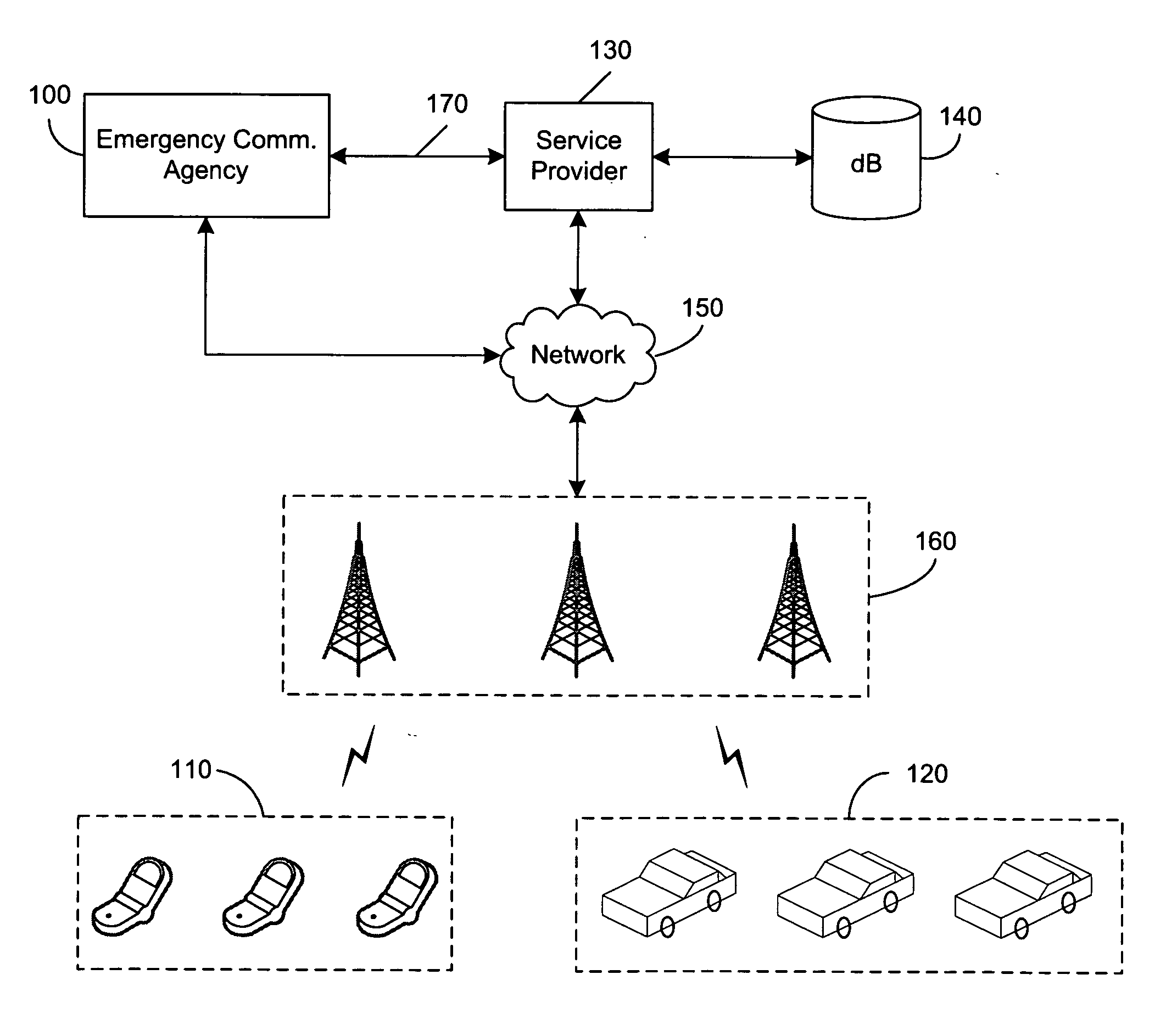Emergency communications for the mobile environment
- Summary
- Abstract
- Description
- Claims
- Application Information
AI Technical Summary
Benefits of technology
Problems solved by technology
Method used
Image
Examples
Embodiment Construction
[0013] The present invention provides for systems and methods for two-way, interactive communication regarding emergency notifications and responses for mobile environments. In accordance with one embodiment of the present invention, a specific geographic area is designated for selective emergency communications. The emergency communications may comprise text, audio, video, and other types of data. The emergency notification is sent to users' mobile communications devices such as in-vehicle telematics units, mobile telephones, personal digital assistants (PDAs), and laptops, etc. that are currently located in the designated area. This may be accomplished by automatically sending the emergency notification to the phone numbers of selected mobile communications devices whose Global Positioning System (GPS) locations are within the designated area. Alternatively, the emergency notification may be broadcast to selected vehicles and mobile communications devices within range of selected ...
PUM
 Login to View More
Login to View More Abstract
Description
Claims
Application Information
 Login to View More
Login to View More - R&D
- Intellectual Property
- Life Sciences
- Materials
- Tech Scout
- Unparalleled Data Quality
- Higher Quality Content
- 60% Fewer Hallucinations
Browse by: Latest US Patents, China's latest patents, Technical Efficacy Thesaurus, Application Domain, Technology Topic, Popular Technical Reports.
© 2025 PatSnap. All rights reserved.Legal|Privacy policy|Modern Slavery Act Transparency Statement|Sitemap|About US| Contact US: help@patsnap.com



